RNP - Gray Langurs

|
Gray
Langurs
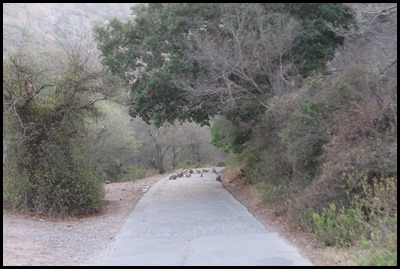  The first creatures we saw in town and Ranthambore National Park were gray langurs – also known as sacred langurs, Indian langurs or Hanuman langurs, they are a group of Old World monkeys native to the Indian subcontinent constituting the entirety of the genus Semnopithecus, meaning “revered, august, holy”.  They
congregate in prime positions to beg from the tourist jeeps.
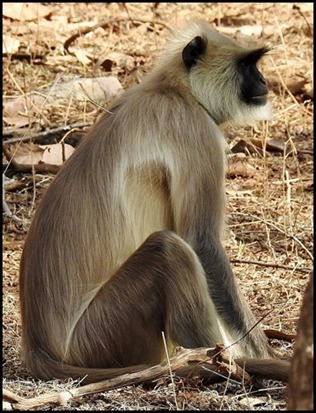  The larger gray langurs are rivals for the largest species of monkey found in Asia. The average weight is 18 kilograms for a male and 11 kilograms for a female.  Gray langurs sleep during the night in trees but also on anything man-made that has any height to it whether it be near the national park or in the town. When resting in trees, they generally prefer the highest branches. Langurs face danger from leopards, jackals, black bears and even pythons. Deer and cows eat food dropped by foraging langurs and are often seen together, as the monkeys send out warning calls which alerts their ground dwelling friends. 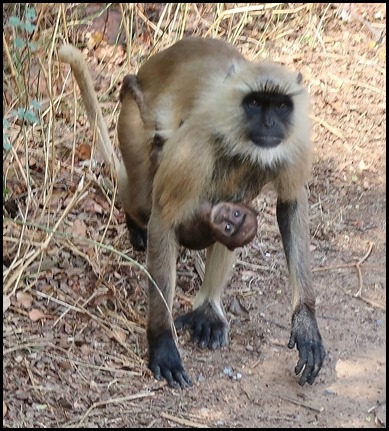 As we were leaving the park on our
third jeep safari we saw this mum with a very new
baby.
 Our final (fourth) safari was a fairly
barren trip until we settled to watch a massive troop on an
incline.
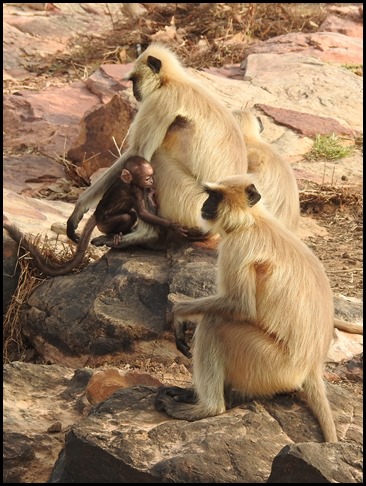 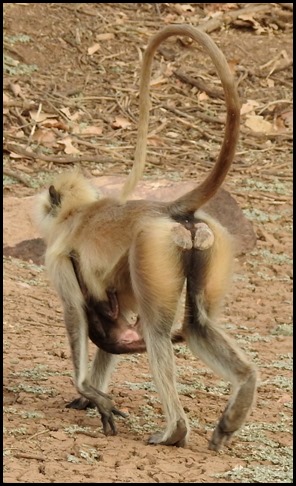 We saw lots of new
born babies.
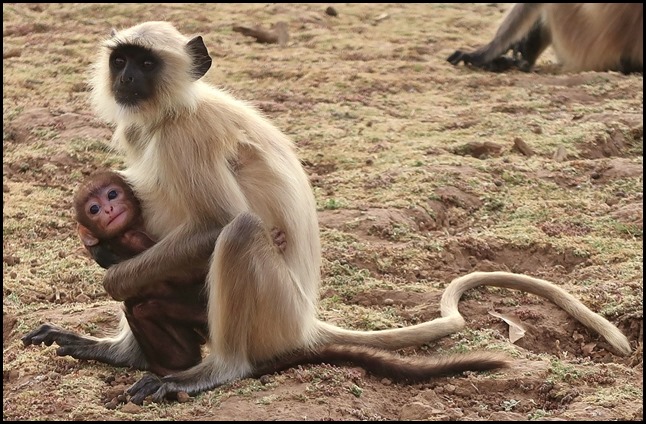 The little one is so
much darker than her mum.
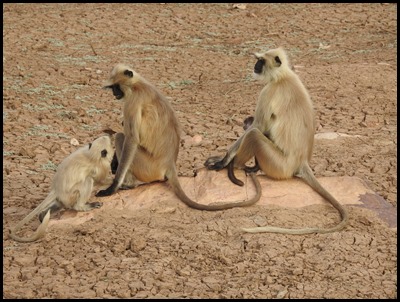 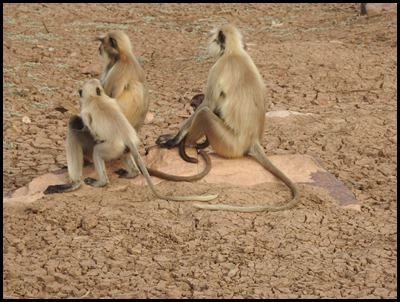 When a female is ready for being
‘serviced’ she will shudder her head, let her tail drop and show off her ‘bits’.
Pregnancy is about two hundred days and usually results in a single baby but
twins are not too rare. Most births occur during the night. Infants are born
with thin, dark brown or black hair and pale skin, they spend their first week
attach themselves to their mothers' chests and mostly just suckle and sleep.
They are fully weaned at just over a year old. The little one on the far left
came up and begged for a suckle, the mother allowed a
few seconds then pushed the hopeful one away crossing her arms across her chest.
When there was a second attempt the mother screeched, swiped with her hand and
then ran off, child in hot pursuit.
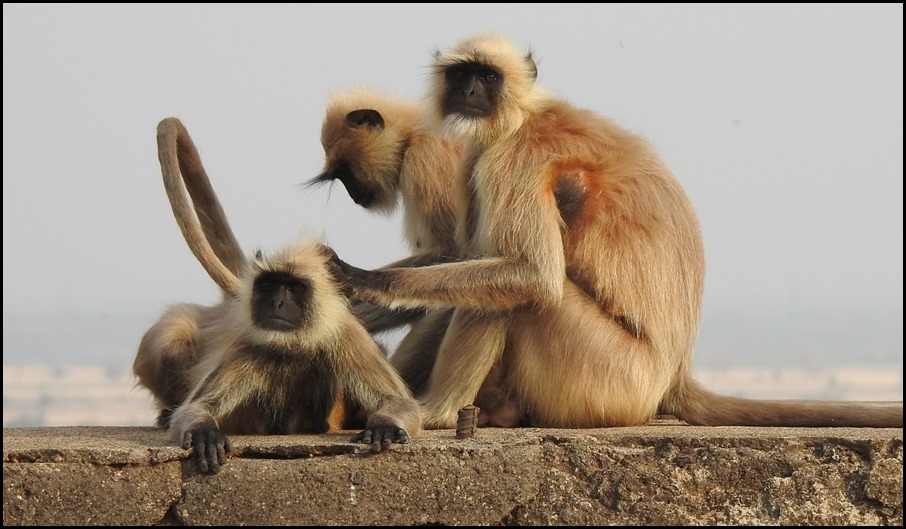 Searching for nits and grooming.
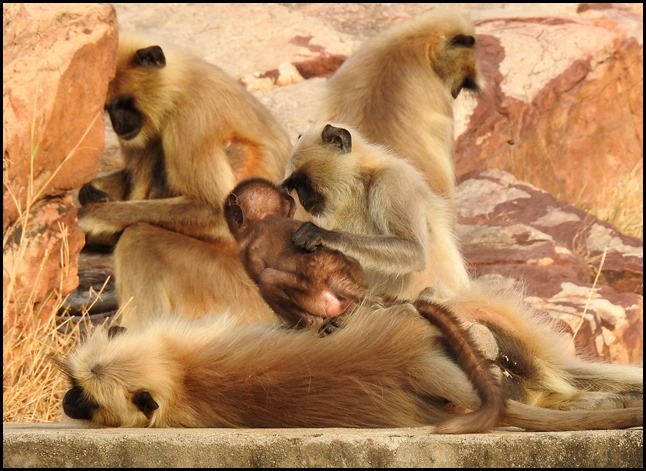 This female ‘scragged’ hold of a wandering baby and put it down on its
mother.
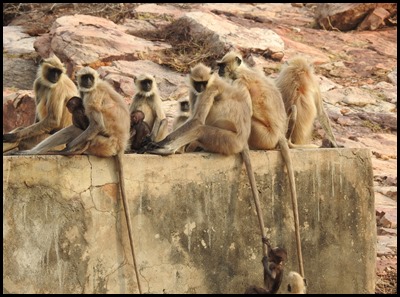 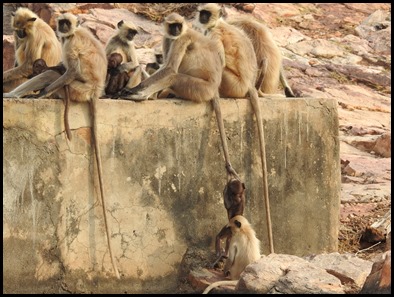 Very funny to watch a baby left behind
trying to scale the wall using an adults tail as a
rope, the teenager sitting on the floor began to help.
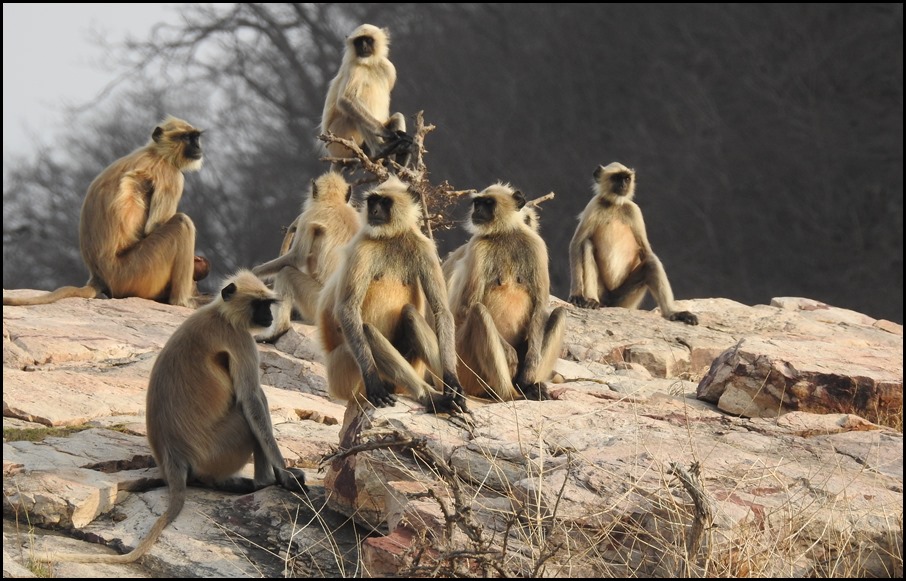 Gray langurs exist in three types of groups: One-male groups - these are made up of one adult male (sole breeders siring all the young and usually holds dominance of the troop for about four years until challenged), several females (all related to one another) and babies. Interestingly the younger the female (adult) the higher the rank in the group. Males will leave the family group when they become adults. Multiple-male groups, lots of males and females of all ages. Males can range from friendly to aggressive, the higher the rank the more females he mates with. Females are usually friendly to one another and work together at jobs such as foraging, moving camp and resting. They are always happy to groom one another whatever their rank. All-male groups - tend to be the smallest of the groups and are made up of males of all ages. It is thought that this is a temporary arrangement that happens after a takeover, they will split. 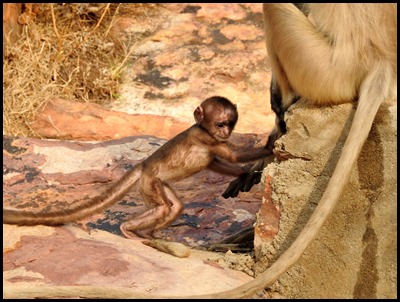 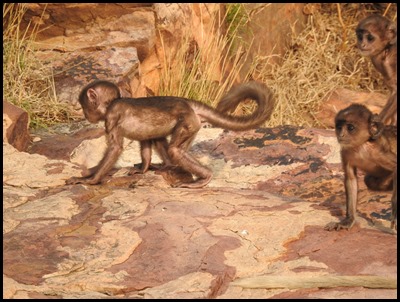 Tentative exploring.
 Keeping close to
mum.
 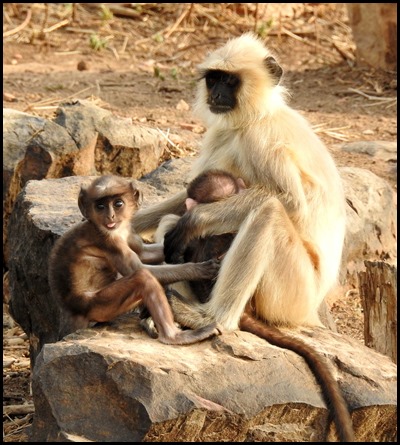 It was as if this baby knew we were watching, turned and promptly poked its tongue out.......
ALL IN ALL COMICAL TO WATCH VERY HUMAN LIKE BEHAVIOURS |